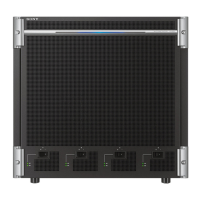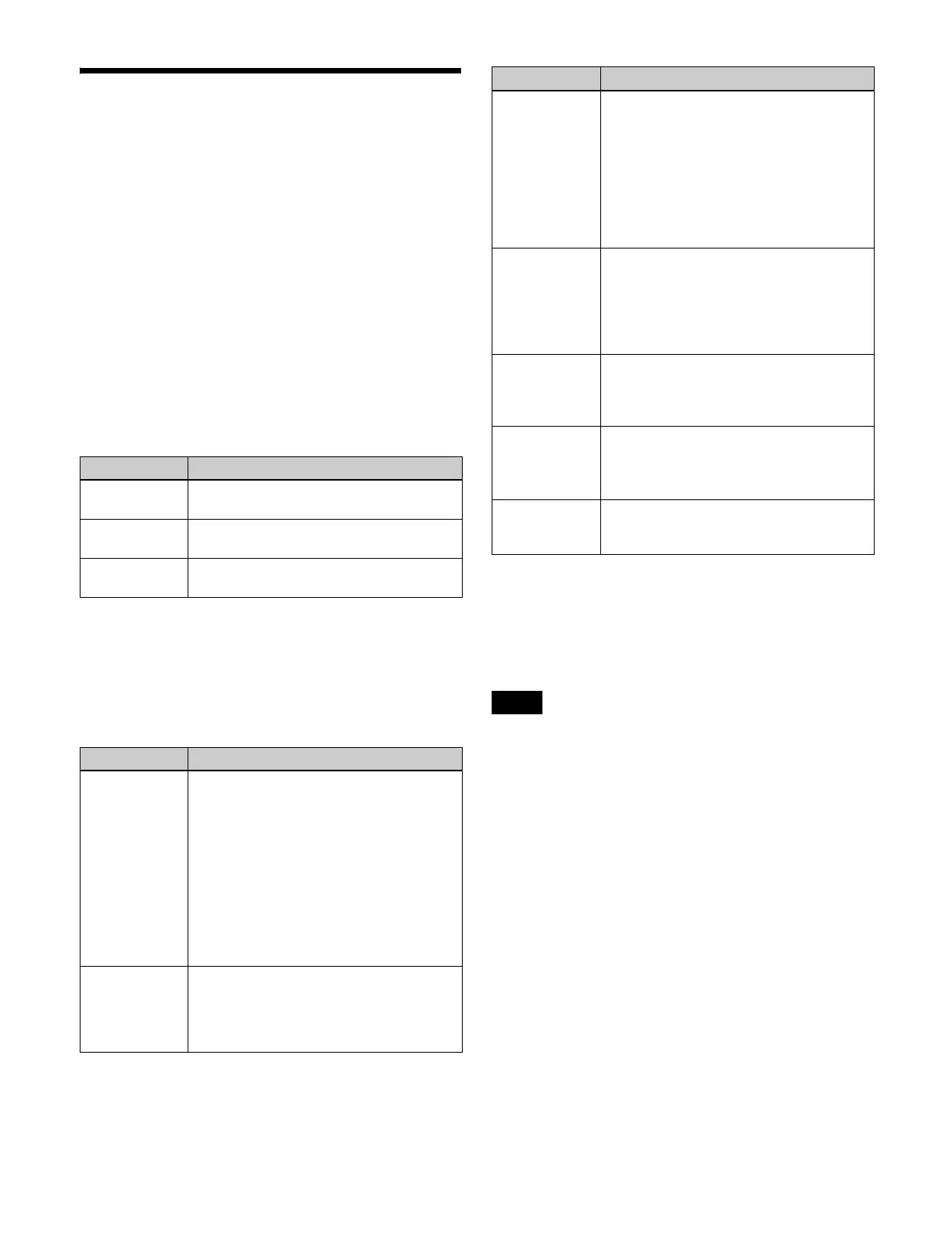343
Macro Attachments
A macro attachment is a function whereby a macro register
is assigned to a control panel button or a particular position
of a fader lever, linking the execution of the button
function or a fader lever operation with a macro execution.
Setting a macro attachment to a button
Select one of the following three linking modes to make
the macro attachment.
Pre-macro: Mode in which the button function is
executed after macro execution has completed.
Post-macro: Mode in which the macro is executed after
carrying out the button function.
Macro only: Mode in which the button function is not
executed, and the macro only is executed.
Select each mode using the following buttons.
You can assign any one of the 250 macro registers to a
button.
For a button whose function is switched by delegation, you
can make a separate macro attachment for each function.
For each control panel, you can make up to 1000 macro
attachment settings.
Macro attachments can be set for the following buttons.
a) In the case of an event that inserts or removes a key, the state at the time
of event registration (inserted or not inserted) is also saved in the macro.
When the macro is executed, the event is only replayed if the key state
matches the saved state.
Example: For a macro with an event that removes a key, when the macro
is executed, the key is removed if it is inserted, but otherwise remains
unchanged.
• After setting a macro attachment to a cross-point button
in the AUX bus control block (AUX bus operation
mode), if in the Setup menu you change the assignment
of buses to the 1st row/2nd row delegation buttons, the
macro attachment setting disappears.
• After setting a macro attachment to a 2nd row cross-
point button in the cross-point control block in key/AUX
bus delegation mode, if in the Setup menu you change
the assignment of buses to the 1st row delegation
buttons, the macro attachment setting disappears.
• After setting a macro attachment to a button for which
you can perform function replacement or function
assignment, if you change the function assignment to the
button, the macro attachment setting disappears.
• After setting a macro attachment to a cross-point button
in the cross-point control block, if you change the
function assignment to the button, the macro attachment
setting disappears.
Enabling/disabling a macro attachment
You can temporarily disable the macro attachment
settings. When a macro attachment is disabled, pressing
the button does not cause execution of the assigned macro.
Mode Button
Pre-macro Press [PRE MACRO] on the cross-point
pad of the cross-point control block.
Post-macro Press [POST MACRO] on the cross-point
pad of the cross-point control block.
Macro only Press the [PRE MACRO] button and
[POST MACRO] button simultaneously.
Control block Button
Cross-point
control block
• Background A bus and B bus cross-point
buttons
• Key 1 bus to key 8 bus cross-point buttons
• Utility 1 bus and 2 bus cross-point buttons
• DME external video bus cross-point
buttons
• DME utility 1 bus and 2 bus cross-point
buttons
• Cross-point buttons of the bus assigned
to the 2nd row.
• Disabled buttons (set to “Inhibit”).
AUX bus
control block
(AUX bus
operation
mode)
Cross-point buttons of the bus assigned to
the 3rd row/4th row.
Tra n si t ion
control block
Fader lever and buttons assigned with the
following functions.
• Next transition selection
• Transition type selection
• Auto transition, cut
• Device operation (CUE, PLAY, STOP)
• Pattern limit enable/disable
• Independent key transition auto-
transition and key on/off
a)
Tra n si t ion
control block
(simple type)
Fader lever and buttons assigned with the
following functions.
• Auto transition
• Transition type selection
• Pattern limit enable/disable
• Device operation (CUE, PLAY, STOP)
Independent
key transition
control block
Buttons assigned with the following
functions.
• Auto transition
a)
• Key on/off
a)
Key fader
control block
Buttons operating the following functions.
• Auto transition
a)
• Key on/off
a)
• Transition type selection
Device control
block (trackball)
VTR/disk recorder/frame memory
operation mode [PLAY], [CUE], [STOP],
and [START TC] buttons
Notes
Control block Button

